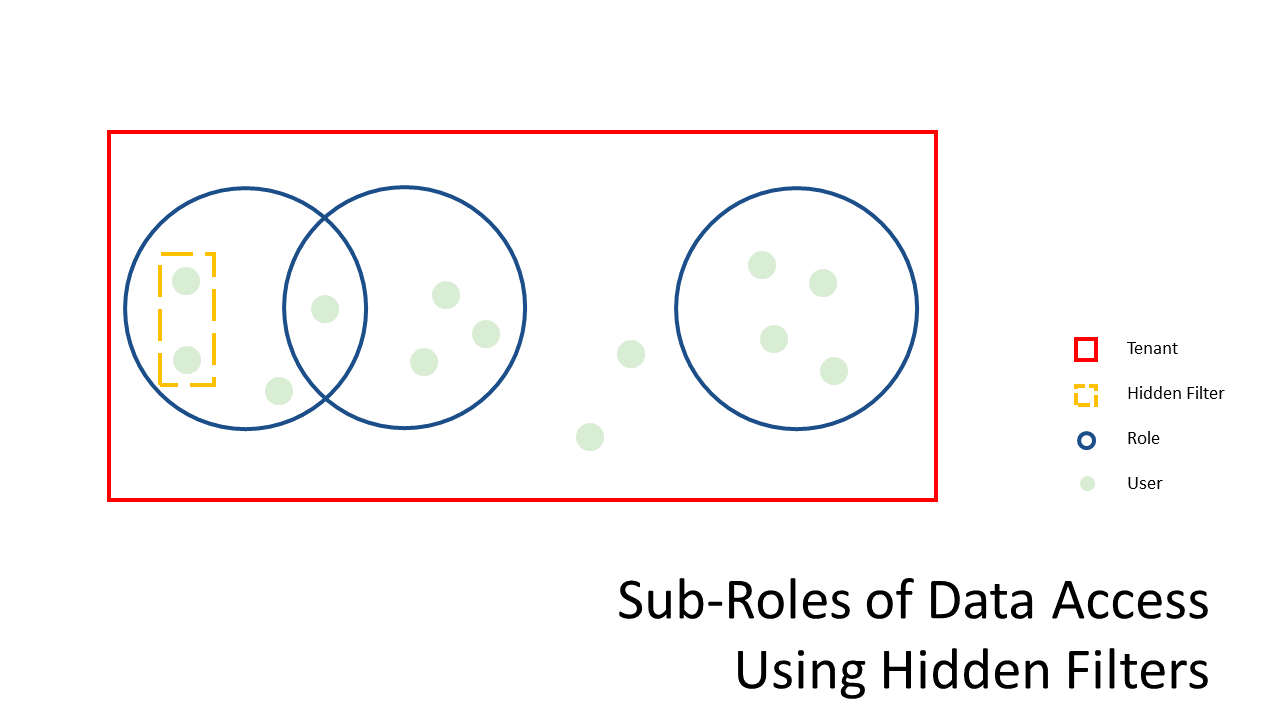The Nature of Analytics Center Security¶
Analytics Center abides by a few simple rules to ensure that resources are properly secure. A resource could be a data source, access right, or report. We will use the following example to display these laws. In this example, we have a tenant with access to resources {A, B, C, D, E}. We have three roles: Role 1 with access to {A,B,C}; Role 2 with accecss to {A,C,D}; Role 3 with access to {A,E}. Finally, we have a User X that we would like to grant access to to certain resources.
Fig. 4 Resource Mapping Example¶
Security at a Role Level¶
Security at a role level allows you to restrict access to resources.
The Law of Filtered Resources¶
- Resources provided to a user is filtered from the broadest indentity to the narrowest. Therefore, when the identity of a user is established, a tenant is created, a role is created, and, finally, a user is created.
Suppose we want User X to have access to Resource A. User X could have either Role 1, Role 2, or Role 3.
Suppose we want User X to have access to Resource E. User x must have Role 3.
Suppose we want User X to have access to Resource F. Since we are only aware of one tenant and that tenant does not have access to Resource F, User X cannot have access to Resource F.
The Law of Least Restriction¶
- The access for a user is the union of all of it’s identities’ access. For reports/dashboards, the access for a user is the union of all of it’s identities’ report/dashboard and all access rights explicitly defined in a report/dashboard.
Users can only belong to one tenant and, therefore, roles defined in a tenant contain subsets of resource access of the tenant. Since users can have multiple roles, the role identity of a user is the union of all it’s roles. Therefore, if a user belongs to one role that does not allow access to a resource but it also belongs to a role that does allow access to a resource, the user will have access to the resource.
Suppose we want User X to have access to Resources {A, B, C, D, E}. User X must have Role 1, Role 2, Role 3.
Suppose we want User X to have access to Resources {A, C, D, E}. User X must have Role 2 and Role 3.
- The Law of Least Restriction makes it impossible to define a user’s access to a resource by the instersection of roles with only the use of roles.
Suppose we want User X to have access to Resources {A, C, E} but we do not want it to have access to Resources {B, D}. With the roles provided, it is impossible to restrict access with roles alone.
The Law of Least Restriction makes it impossible to define roles within roles (subsets) with only the use of roles
Security at a Code Level¶
Security at a code level allows for further granulation of data.
Security at a Report Level¶
- Explicit permissions in reports regarding modification supersede permissions set in a role.
If a user’s role does not grant it access to data or code is used to filter the data, the user will not have access to the data. A message “No Results Found” will be displayed.
In the report designer, categories exist if there is a report that exists within it.
In the report designer, categories are only visible to a user if at least one report is visible to the user.

